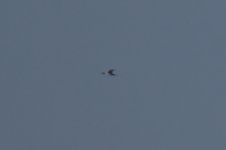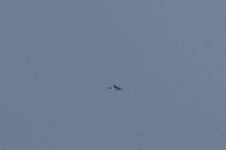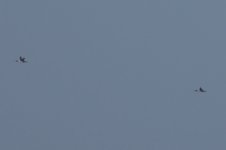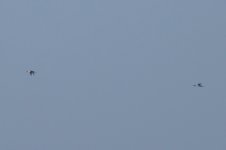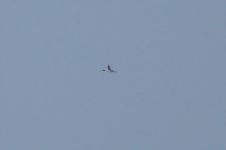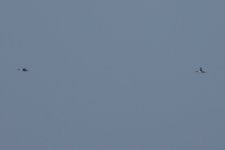Luís Vieira
Member

Hi everyone,
I photographed these 2 birds on 02/20/2022 in Cabo Raso, the most western location in mainland Portugal on the Atlantic coast. The birds passed a few hundred meters from the coast, at moderate altitude, in the North>South direction. At the time it seemed to me to be juvenile P. carbo, because of the white on the chest, but when I looked at the photos I see that the birds have a lot of white on the neck also and the legs seem to be very projected backwards. I asked for other birders opinions which included Gavia sp. and M. serrator, but I am not very sure about these IDs. Can you give your opinion about the ID of these birds?
Thanks a lot in advance.
I photographed these 2 birds on 02/20/2022 in Cabo Raso, the most western location in mainland Portugal on the Atlantic coast. The birds passed a few hundred meters from the coast, at moderate altitude, in the North>South direction. At the time it seemed to me to be juvenile P. carbo, because of the white on the chest, but when I looked at the photos I see that the birds have a lot of white on the neck also and the legs seem to be very projected backwards. I asked for other birders opinions which included Gavia sp. and M. serrator, but I am not very sure about these IDs. Can you give your opinion about the ID of these birds?
Thanks a lot in advance.




